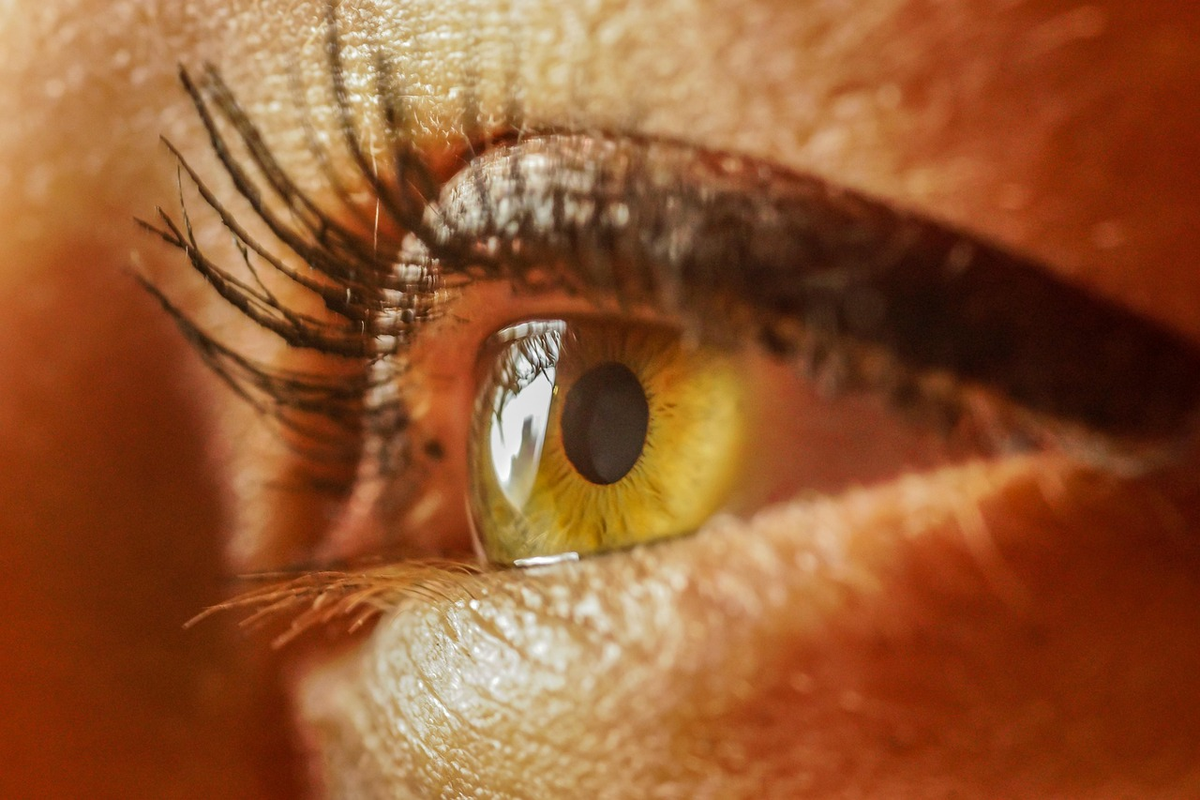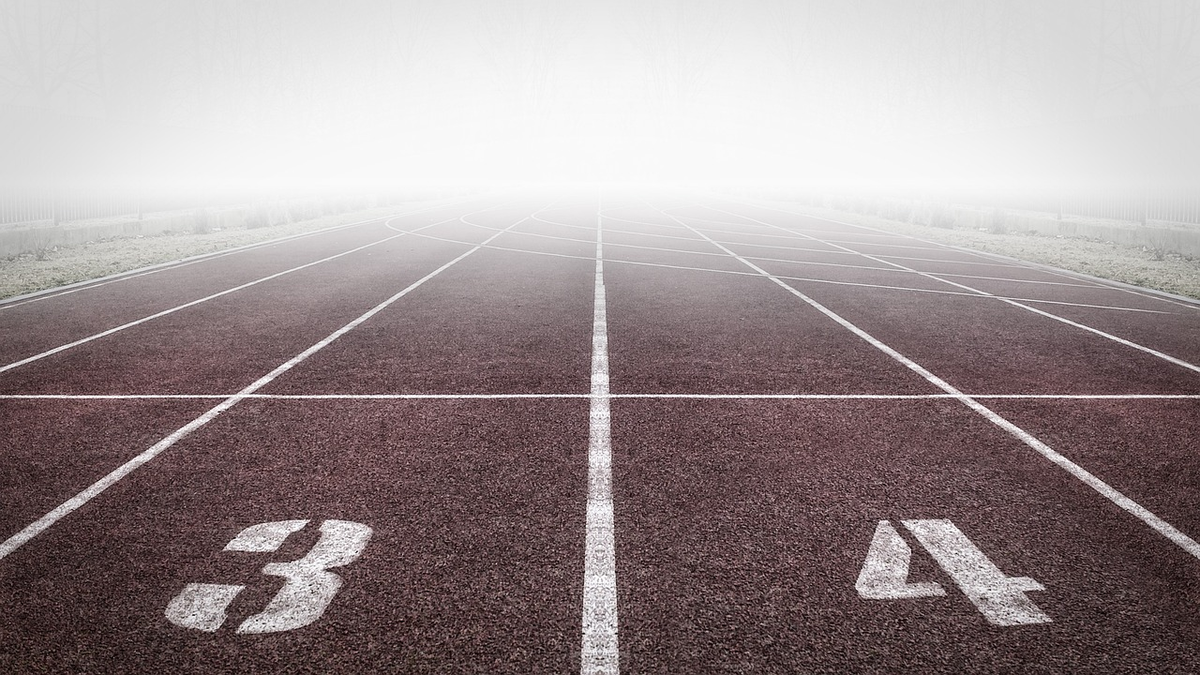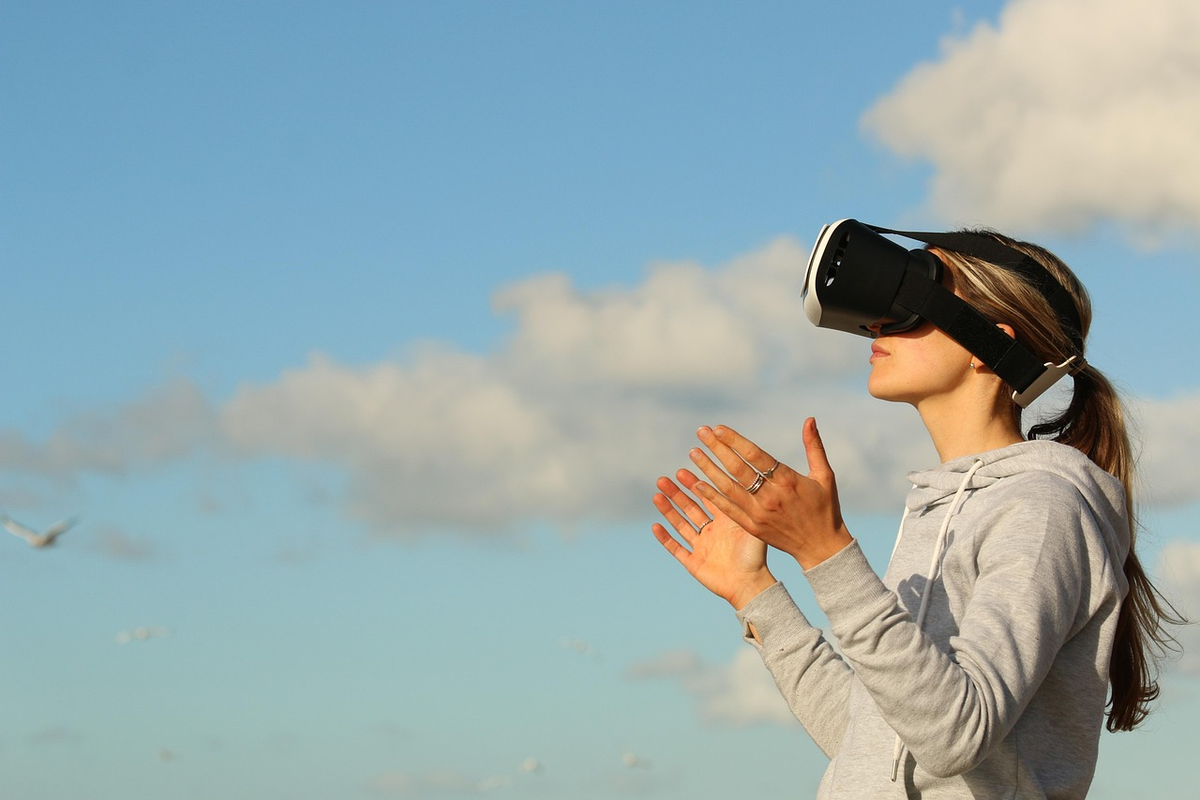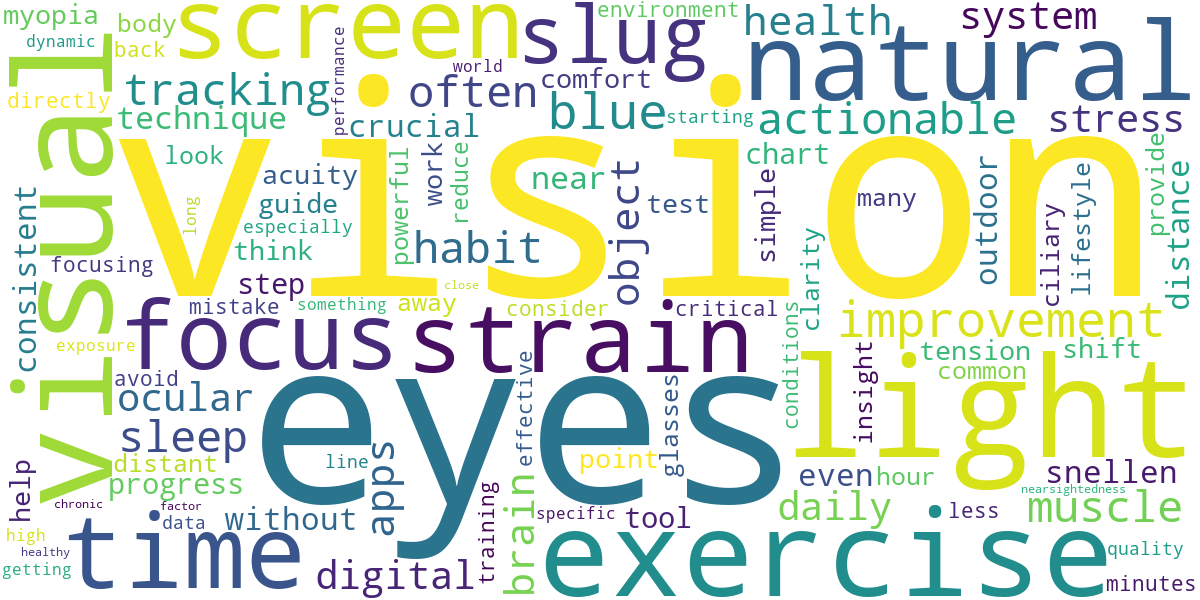
What if the decline in your eyesight isn’t an inevitable fate, but rather a reversible process shaped by daily habits and visual strain? For too long, many have accepted deteriorating vision as a fixed outcome, resigning themselves to ever-stronger prescriptions.
For a complete overview of this topic, refer to our main guide on Biohacking Vision: The Ultimate Guide to Eye Health & Clarity.
This definitive guide on Natural Vision Improvement challenges that very notion, empowering you with a profound understanding that your vision is adaptable and can be actively nurtured. We’ll unveil proven exercises, essential lifestyle adjustments, and practical techniques designed to help you regain clarity, reduce strain, and potentially lessen your reliance on corrective lenses – giving you the tools to truly see the world differently.
💡 Key Takeaways
- Natural vision improvement is an achievable goal through dedicated practice and a holistic approach.
- Specific eye exercises and conscious visual habits can actively reduce strain and enhance clarity.
- Lifestyle factors, including nutrition, light exposure, and screen habits, are crucial for long-term eye health.
- You can empower yourself with actionable strategies and tracking methods to take control of your visual future.
In This Article
- — 💡 Key Takeaways
- → 💡 Getting Started & Understanding
- — 👁️🗨️ Redefining “Vision Problems”
- — 🧠 The Brain-Eye Connection: It’s Not Just Your Eyes
- — 🌱 The Root Causes: Why Vision Deteriorates
- — ✅ Your Foundational Mindset for Success
- → 👁️ Core Exercises & Techniques
- — 🤲 The Palming Technique: Your Eye’s Mini-Vacation
- — 💻 The 20-20-20 Rule: Your Digital Screen Lifeline
- — 🏞️ Distance Viewing & Peripheral Awareness: Expanding Your Visual World
- — ⚙️ Shifting & Focusing: Dynamic Vision Training
- → 🌱 Lifestyle & Environment Factors
- — 🥗 Nutritional Foundations for Optical Health
- — ☀️ The Power of Natural Light & The Peril of Artificial Light
- — 💻 Navigating the Digital Eye Strain Epidemic
- — 😴 Sleep, Stress & Systemic Well-being
- — 💧 Hydration: The Unsung Hero of Eye Comfort
- → 📊 Resources & Progress Tracking
- — 🎯 Establishing Your Baseline: Where Are You Starting From?
- — 📈 Tools for Consistent Tracking & Measurement
- — 🔬 Beyond Acuity: Tracking Deeper Visual Skills
- — 🧠 Leveraging Data for Optimized Progress
💡 Getting Started & Understanding

Alright, let’s get down to brass tacks. When we talk about “Natural Vision Improvement,” we’re not just talking about a few eye exercises you do with a chart. No, this is about understanding one of your body’s most intricate and adaptable systems – your visual system – and giving it the tools and environment it needs to thrive.
Think of it less like a rigid prescription you’re stuck with forever, and more like fine-tuning a high-performance engine that’s perhaps been running on suboptimal fuel or under less-than-ideal conditions. Your eyes aren’t just static lenses; they are dynamic organs, intricately connected to your brain, your body, and your daily habits. This isn’t just about ‘fixing’ something; it’s about optimizing your visual well-being from the inside out.
👁️🗨️ Redefining “Vision Problems”
Let’s shift our perspective for a moment. What if your “vision problem” isn’t a permanent defect, but rather a learned habit or an adaptive response to your environment? For many, conditions like myopia (nearsightedness), hyperopia (farsightedness), or even astigmatism are often exacerbated, if not directly influenced, by our modern lifestyles.
- ✅ Myopia (Nearsightedness): Often linked to excessive close-up work, where the eye’s focusing muscles (ciliary muscles) remain in a state of tension, making distant objects blurry.
- ✅ Hyperopia (Farsightedness): While sometimes structural, it can also be influenced by a lack of demand for close focus, or habitual straining to see nearby objects clearly.
- ✅ Astigmatism: Often described as an irregularly shaped cornea, but can also be influenced by chronic muscular tension around the eye, subtly altering its curvature.
Consider this: your eye is a highly sophisticated camera. Its lens (the crystalline lens), its aperture (the pupil), and its focusing mechanism (the ciliary muscle and suspensory ligaments) are constantly adapting. When you spend hours staring at a screen just inches from your face, your ciliary muscles are in a constant state of contraction. Over time, this can lead to a phenomenon known as “accommodative spasm” – essentially, your eyes get “stuck” in a close-focus mode.
🧠 The Brain-Eye Connection: It’s Not Just Your Eyes
Here’s a crucial concept: seeing isn’t just about light hitting your retina. It’s about your brain interpreting those signals. Your visual cortex, located in the back of your brain, processes an incredible amount of information, constructing the world you perceive. This partnership is immensely powerful and remarkably plastic.
The National Eye Institute (NEI) highlights that vision is a complex process involving not just the eyes, but an intricate network of nerves and brain regions that interpret visual signals into meaningful images. This neurological component means that just as your brain learns to walk or play a musical instrument, it also learns how to see – and can unlearn maladaptive visual habits. (Source: National Eye Institute)
Non-Obvious Insight: Your Brain’s Role as Master Interpreter: Imagine you’re trying to understand a muffled conversation across a noisy room. You don’t just rely on your ears; your brain uses context, lip-reading, and prior knowledge to fill in the gaps. Your visual system works similarly. It’s constantly predicting, interpreting, and refining. By improving the clarity of the signals from your eyes and refining your brain’s interpretation habits, you unlock profound visual potential.
🌱 The Root Causes: Why Vision Deteriorates
So, why are so many of us experiencing declining vision? It’s rarely one single factor, but rather a confluence of modern stressors:
- 🚨 Excessive Close-Up Work: Hours spent on smartphones, computers, tablets, and reading without sufficient breaks or distance viewing.
- 🚨 Lack of Outdoor Time & Natural Light: Our ancestors spent vast amounts of time outdoors, exposing their eyes to varied distances and natural light spectra. This provides crucial stimulation for healthy eye development and function.
- 🚨 Digital Eye Strain: Beyond just close-up work, the specific characteristics of digital screens – their flicker, glare, and high blue light emission – can contribute to discomfort and long-term strain. Think about tools like F.lux or Night Shift on your devices; they exist for a reason!
- 🚨 Chronic Tension & Stress: Just as stress can manifest in neck or shoulder tension, it can also manifest in chronic tension around the eyes and in the visual system, hindering natural focusing abilities.
✅ Your Foundational Mindset for Success
Before we dive into techniques, adopting the right mindset is paramount. This isn’t a quick fix; it’s a journey of re-education and re-discovery for your eyes and brain. Here’s what you need:
- 🎯 Patience & Consistency: Like any skill, natural vision improvement takes time and diligent practice. Small, consistent efforts yield significant results.
- 🎯 Awareness & Observation: Become keenly aware of your visual habits. How do you hold your phone? Do you blink enough? Do you squint? This self-observation is your most powerful diagnostic tool.
- 🎯 Effortless Seeing, Not Straining: This is critical. The goal is to relax your eyes into clarity, not to force them. Straining creates tension, which is counterproductive.
Common Mistake to Avoid: Trying Too Hard. The paradox of vision improvement is that often, the harder you “try” to see, the more you strain, and the worse your vision might temporarily become. Instead, cultivate a relaxed, curious, and playful approach. Allow your eyes and brain to adapt naturally, much like learning to ride a bike – it requires balance and subtle adjustments, not brute force.
- Your Complete Guide to Natural Vision Improvement: Getting Started
- Debunking Myths: What’s True and False About Natural Vision Improvement
👁️ Core Exercises & Techniques

Alright, let’s get down to brass tacks. You’re here because you want actionable strategies to support your vision, to give your eyes the kind of intelligent, targeted training they deserve. This isn’t about magical cures or ditching your glasses overnight. Instead, think of these techniques as a dedicated fitness regimen for your ocular system, designed to reduce strain, enhance visual comfort, and cultivate healthier viewing habits in our increasingly digital world.
Now, before we dive deep, let’s address a critical point. While the American Academy of Ophthalmology (AAO) maintains that eye exercises don’t correct refractive errors like myopia (nearsightedness) or hyperopia (farsightedness), their immense value lies elsewhere: in alleviating digital eye strain, improving ocular comfort, and fostering more dynamic visual behaviors. We’re aiming for optimized performance, just like you’d train any other part of your body for peak function.
🤲 The Palming Technique: Your Eye’s Mini-Vacation
Imagine giving your eyes a warm, dark, restorative bath. That’s essentially what palming offers. It’s a simple, yet profoundly effective technique for immediate ocular relaxation.
- ✅ How to Do It: Find a quiet spot. Rub your palms together briskly for 10-15 seconds to generate warmth. Then, gently cup your warm palms over your closed eyes, ensuring no light seeps in. Rest your elbows comfortably on a desk or your knees. The key here is absolute darkness and warmth.
- ✅ Why It Works: The warmth from your palms helps relax the tiny muscles around your eyes. The complete darkness allows your photoreceptor cells (rods and cones) to ‘recharge’ without any light stimulation. It’s like pressing the reset button on your visual system, melting away tension accumulated from hours of screen time or intense focus.
- ✅ Duration: Aim for 2-5 minutes per session, several times a day.
Pro Tip: Integrate palming into your routine naturally. Do it during short breaks between meetings, while listening to a podcast, or even for a few minutes before bed. Consistency is far more impactful than sporadic, long sessions.
💻 The 20-20-20 Rule: Your Digital Screen Lifeline
In our screen-centric lives, the 20-20-20 rule isn’t just a suggestion; it’s a non-negotiable strategy for mitigating digital eye strain, also known as Computer Vision Syndrome (CVS).
- ✅ What It Is: Every 20 minutes, look at something 20 feet away, for at least 20 seconds.
- ✅ Why It’s Crucial: When you’re locked onto a screen, your ciliary muscles, responsible for focusing, are constantly contracted. This sustained near-focus work is like holding a heavy weight—eventually, the muscles fatigue, leading to blurriness, headaches, and dry eyes. Looking 20 feet away relaxes these muscles, giving them a much-needed break and re-engaging your distant vision.
- ✅ Implementation: Set a recurring timer on your phone, use a desktop app, or integrate it with a smart lighting system. Many apps, like Eyeleo or simple alarm reminders, can prompt you. Also, consider blue light filtering glasses from reputable brands like Felix Gray or Warby Parker to further reduce digital eye fatigue, especially after sunset.
Common Mistake to Avoid: Don’t just shift your gaze to a different near object (like another screen or a book). You must look far away – truly engaging your distance vision to allow those ciliary muscles to relax. A window view is ideal!
🏞️ Distance Viewing & Peripheral Awareness: Expanding Your Visual World
We often narrow our visual field, especially indoors. Actively engaging your distance and peripheral vision is a powerful antidote to this tunnel vision.
- ✅ How to Practice: Step outside. Look at the farthest object you can clearly see – a distant building, a tree line, a cloud. Hold that gaze, then shift your focus to something closer, then further again. Let your eyes scan and explore the landscape, rather than fixating on a single point.
- ✅ Engaging Peripheral Vision: While looking forward, gently expand your awareness to what’s happening on the edges of your vision without directly turning your head. Notice the movement, the colors, the general shapes.
- ✅ Benefits: This exercise encourages your eyes to use their full range of accommodation (their ability to focus at different distances). It also trains your brain to process visual information more broadly, which is critical for dynamic vision and spatial awareness. Think of it as opening up your entire visual aperture, not just the tiny circle directly in front of you.
Non-Obvious Insight: Your peripheral vision is dominated by rods, which are crucial for low-light vision and detecting motion. By actively engaging it, you’re not just resting your central vision; you’re strengthening your overall visual processing network.
⚙️ Shifting & Focusing: Dynamic Vision Training
This technique is about building ocular agility, much like a weightlifter trains different muscle groups for comprehensive strength.
- ✅ What It Is: Rapidly shifting your focus between near and far objects, then back again. This isn’t just casual looking; it’s a deliberate, conscious act of refocusing.
- ✅ How to Do It: Hold your thumb out about 6-10 inches from your face. Focus clearly on your thumbprint. After a few seconds, quickly shift your gaze to a distant object across the room (or outdoors). Focus on a specific detail on that distant object. Hold for a few seconds, then swiftly shift back to your thumb. Repeat this 10-20 times.
- ✅ Why It’s Effective: This rapid near-far focusing directly exercises your ciliary muscles, enhancing their flexibility and responsiveness. It’s like doing reps at the gym for your eye’s internal lens system. Over time, this can lead to quicker, more effortless transitions between different viewing distances.
Pro Tip: Incorporate this while walking. Focus on a near object on the sidewalk, then a distant car, then back to the ground. This integrates vision training into your daily movement, making it sustainable.
- The Bates Method Explained: Principles, Core Exercises, and Effectiveness
- Targeted Eye Exercises for Myopia (Nearsightedness) Correction
- Natural Strategies & Exercises for Presbyopia (Farsightedness & Aging Eyes)
- Can Eye Exercises Correct Astigmatism Naturally? An Evidence-Based Look
- Ocular Relaxation: Techniques to Relieve Eye Strain and Improve Focus
🌱 Lifestyle & Environment Factors

Alright, let’s talk about the bedrock of true ocular vitality: the often-overlooked, yet profoundly impactful, lifestyle and environmental factors that shape your vision. Forget the generic advice; we’re diving deep into the actionable science.
Your eyes aren’t just isolated optical instruments; they’re an exquisitely sensitive extension of your entire physiological system. What you consume, how you manage light, your sleep patterns, and even your stress levels aren’t just “nice-to-haves” for general health – they are critical determinants of your visual acuity and long-term eye health. Think of them as the silent architects building or eroding your vision, brick by brick.
🥗 Nutritional Foundations for Optical Health
You wouldn’t expect a high-performance sports car to run on low-grade fuel, would you? Your eyes, arguably one of the most metabolically active organs in your body, demand premium nutrition. This isn’t about vague “healthy eating”; it’s about radical specificity.
- ✅ Carotenoids: Your Eyes’ Internal Sunglasses. The undisputed superstars here are Lutein and Zeaxanthin. These powerful antioxidants accumulate in the macula – the central part of your retina responsible for sharp, detailed vision. They literally filter harmful blue light and neutralize free radicals.
- 💡 Actionable Intake: Load up on dark, leafy greens like spinach, kale, and collard greens. Don’t forget vibrant orange and yellow foods such as corn, peppers, and even the humble egg yolk (the fat in the yolk helps with absorption!).
- Pro Tip: Cooking these vegetables lightly and consuming them with a healthy fat (like olive oil or avocado) significantly boosts the absorption of these fat-soluble carotenoids. Don’t skip the egg yolks!
- 🐟 Omega-3 Fatty Acids: For Structural Integrity & Tear Film Quality. Specifically, EPA and DHA are crucial for the structural integrity of retinal cell membranes and play a vital role in maintaining a healthy, stable tear film. If you’ve ever experienced dry eyes, listen up.
- 💡 Actionable Intake: Prioritize wild-caught, fatty fish like salmon, mackerel, and sardines at least 2-3 times per week. For plant-based sources, consider ground flaxseed, chia seeds, and high-quality algal oil supplements (which provide direct DHA and EPA).
- Common Mistake to Avoid: Relying solely on ALA (Alpha-Linolenic Acid) from nuts and seeds. While good, the conversion to usable EPA/DHA is often inefficient. Direct sources are best.
- 🥝 Antioxidant & Vitamin Powerhouses: Vitamins C, E, and Zinc are also crucial for protecting your delicate eye tissues from oxidative stress.
- 💡 Actionable Intake: Think brightly colored fruits and vegetables like citrus fruits, bell peppers, berries (especially blueberries and acai), nuts, and seeds.
☀️ The Power of Natural Light & The Peril of Artificial Light
Our eyes evolved over millennia under the broad, full-spectrum light of the sun, not the narrow, discontinuous spectrum of modern artificial illumination. This is a profound mismatch with significant consequences.
- ✅ Embrace Outdoor Exposure: Natural daylight is profoundly beneficial. It helps regulate your circadian rhythm, which in turn influences melatonin production and overall systemic health. For children, ample outdoor time is the single most effective intervention against the development and progression of myopia (nearsightedness).
- 💡 Actionable Step: Aim for at least 90-120 minutes of outdoor time daily, ideally spread throughout the day. Morning light is particularly potent for setting your circadian clock. Even on cloudy days, the light intensity is orders of magnitude greater than indoor lighting.
- Non-Obvious Insight: It’s not just about avoiding blue light; it’s about getting enough full-spectrum light. Your retina contains specialized photoreceptors (ipRGCs) that respond specifically to blue-rich light, crucial for circadian signaling.
- 💡 Mitigate Artificial Light Exposure: Our modern indoor environments are awash in problematic light sources. Fluorescent and many LED lights have a choppy, blue-dominant spectrum that can contribute to eye strain, disrupt sleep, and potentially accelerate retinal aging.
- Pro Tip: Evaluate your indoor lighting. Opt for incandescent bulbs or “warm white” LEDs (2700K or lower) where possible, especially in the evenings. Consider installing dimmer switches.
💻 Navigating the Digital Eye Strain Epidemic
With an average adult spending 7+ hours a day on digital devices, it’s no surprise “Digital Eye Strain” (DES) or “Computer Vision Syndrome” is rampant. It’s not just blue light; it’s the combination of reduced blink rates, sustained near focus, and improper screen ergonomics.
- 👓 Blue Light Management: While the direct retinal damage from screen blue light is still debated for adults (it’s less intense than natural sunlight), its impact on circadian rhythm and melatonin suppression is clear. This can severely disrupt sleep, which directly impacts eye recovery.
- 💡 Actionable Steps:
- Software Solutions: Utilize built-in features like Apple’s Night Shift or third-party apps like f.lux on your devices. These automatically adjust your screen’s color temperature to warmer tones after sunset.
- Blue Light Filtering Glasses: Consider glasses with a modest blue light filter for prolonged screen use, especially in the evenings. Brands like Felix Gray or Warby Parker’s Scout collection offer options that can help reduce visual fatigue and improve sleep quality by not blocking all blue light, but filtering the problematic wavelengths.
- Screen Protectors: Some companies offer screen overlays that block blue light.
- 🧘♀️ The 20-20-20 Rule: Your Visual Breath. This is simple, yet incredibly effective for reducing accommodative strain and maintaining a healthy blink rate.
- 💡 Actionable Step: Every 20 minutes, look away from your screen for 20 seconds at an object at least 20 feet away. This allows your ciliary muscles (which control focus) to relax and your eyes to re-lubricate.
- Common Mistake to Avoid: Thinking you can “power through” hours of screen time. Your eyes need micro-breaks just like your body needs stretches.
- 🖥️ Ergonomic Optimization: Your setup profoundly impacts your comfort and visual efficiency.
- 💡 Actionable Steps:
- Distance: Position your screen about an arm’s length (20-30 inches) away from your eyes.
- Height: The top of your screen should be at or slightly below eye level, so you’re looking slightly downward.
- Glare: Minimize glare from windows or overhead lights by adjusting screen position or using anti-glare filters.
😴 Sleep, Stress & Systemic Well-being
Your eyes don’t just “rest” when you sleep; they undergo critical repair and rejuvenation. And chronic stress? It’s a systemic drain that manifests in myriad ways, including ocular discomfort.
- 🛌 Quality Sleep: Ocular Repair & Recovery. During sleep, your eyes are lubricated, cellular repair mechanisms kick into high gear, and metabolic waste products are cleared. Poor sleep exacerbates dry eye, eye strain, and can even contribute to conditions like central serous retinopathy (though rare).
- 💡 Actionable Steps: Prioritize 7-9 hours of quality sleep nightly. Establish a consistent sleep schedule. Optimize your sleep environment (dark, cool, quiet). Tools like the Oura Ring or Whoop Strap can provide valuable insights into your sleep architecture and recovery.
- 🧠 Stress Management: Beyond Just Mental Health. Chronic stress elevates cortisol, impacts blood flow, and can lead to muscle tension – even in the tiny muscles that control your eye’s focus. It can also exacerbate inflammatory conditions and dry eye syndrome.
- 💡 Actionable Steps: Incorporate daily stress-reduction practices. This could be mindfulness meditation (apps like Calm or Headspace), deep breathing exercises, spending time in nature, or regular physical activity. Find what genuinely helps you down-regulate.
💧 Hydration: The Unsung Hero of Eye Comfort
Simple, yet often overlooked. Your tear film, crucial for lubricating and protecting your eye’s surface, is primarily water. Dehydration directly impacts its quality and quantity.
- 💧 Optimal Water Intake: If you’re chronically dehydrated, your eyes will be among the first to signal distress. Dry, gritty eyes are a common symptom.
- 💡 Actionable Step: Aim for consistent hydration throughout the day. The “8 glasses a day” rule is a starting point, but listen to your body and consider your activity level. Often, aiming for half your body weight in ounces (e.g., 150 lbs person aims for 75 oz) is a good target.
- Pro Tip: Don’t just drink water; ensure you’re getting adequate electrolytes. Adding a pinch of sea salt to your water or consuming electrolyte-rich foods can improve cellular hydration.
- Common Mistake to Avoid: Drinking large amounts of water infrequently. Consistent sips throughout the day are more effective for maintaining hydration than chugging a liter at once.
- Beyond Carrots: The Ultimate Diet & Nutrition Guide for Optimal Eye Health
- Blue Light Exposure & Your Eyes: Risks, Protection, and Natural Mitigation
- Daily Habits for Better Vision: Integrating Eye Health into Your Lifestyle
- The Connection Between Stress and Vision: How to Reduce Ocular Strain
📊 Resources & Progress Tracking

Welcome back. As we delve deeper into optimizing your vision, it’s absolutely critical that we discuss something foundational, something often overlooked in the wellness space: data and measurement. Think of it like this: would you ever embark on a serious fitness journey without a starting weight, without tracking your lifts, or without monitoring your sleep? Of course not. Your vision is no different. We’re not operating on wishful thinking here; we’re operating on tangible, measurable progress.
In the world of natural vision improvement, consistency and precise feedback are your most powerful allies. Without them, you’re essentially flying blind – no pun intended. This section will equip you with the practical tools and methods to not only track your journey but also to understand what those numbers truly mean, allowing you to iterate and optimize your approach for maximum effect.
🎯 Establishing Your Baseline: Where Are You Starting From?
Before you even begin any exercise, the first, non-negotiable step is to accurately assess your current visual capabilities. This isn’t just about knowing your prescription; it’s about understanding your visual habits and performance across various metrics. Just as a top-tier athlete undergoes a battery of tests before starting a new training cycle, you need to establish your ocular “starting line.”
- ✅ Professional Eye Exam: Your best starting point is always a comprehensive eye exam with an optometrist. This provides the most accurate and medically sound assessment of your visual acuity, refractive error, and overall eye health. Get a precise, up-to-date prescription.
- 📏 Standard Snellen Chart: Acquire a physical Snellen chart or print one out accurately. Stand at the recommended distance (usually 20 feet or 6 meters). Test each eye individually, then both eyes together, noting the smallest line you can comfortably read. Do this in good, consistent lighting.
- 📱 Digital Acuity Apps: For quick, on-the-go checks, apps like “Visual Acuity Test” or “Eye Chart” on platforms like iOS App Store or Google Play can provide a convenient, albeit less precise, measure. Many are free and offer various chart types (Snellen, Tumbling E, Landolt C).
Pro Tip: Consistent Conditions Are Key. Always test your vision under the same lighting conditions, at the same distance, and at a consistent time of day. Your vision can fluctuate throughout the day due to fatigue or hydration. Consistency in testing environment ensures your data is reliable.
📈 Tools for Consistent Tracking & Measurement
Once you have your baseline, the real work begins: diligent, consistent tracking. This isn’t about obsessive daily checks but regular, scheduled measurements that help you see trends, not just momentary fluctuations. Think of it as your personalized vision dashboard.
- 🗒️ Vision Journal or Spreadsheet: This is arguably the most powerful and accessible tool. Create a simple log. Columns might include:
- Date: The day you perform the test.
- Time: When during the day the test was done.
- Eye Tested: Left, Right, or Both.
- Snellen Line Read: E.g., 20/40, 20/30.
- Notes: Any factors that might have influenced performance (e.g., “tired today,” “just came inside from bright sun,” “felt relaxed”).
- Exercises Performed Today: What specific techniques did you do?
You can use a simple notebook, a spreadsheet program like Google Sheets or Microsoft Excel, or even dedicated habit-tracking apps like Habitica or Streaks to log your daily exercises.
- 📱 Dedicated Vision Tracking Apps: While still a developing field, some apps are emerging for tracking. For instance, specific apps designed for myopia management or amblyopia exercises sometimes include built-in tracking features. Look for apps that allow you to log your Snellen acuity over time.
- ↔️ Near Point Rule (NPR) / Push-Up Tests: For tracking accommodation and convergence, a simple ruler can be invaluable. Measure your Near Point of Accommodation (NPA) and Near Point of Convergence (NPC) regularly. Many ophthalmologists use specialized tools for this, but a simple ruler can provide valuable data for your personal tracking.
- ☀️ Outdoor Time Log: Given the strong correlation between outdoor time (especially natural light exposure) and myopia prevention/management, track your daily minutes spent outdoors. A basic stopwatch or a phone app like “Forest” or “Toggl Track” can help.
🔬 Beyond Acuity: Tracking Deeper Visual Skills
While Snellen acuity (20/XX) is crucial, it’s just one piece of the puzzle. Natural vision improvement isn’t solely about seeing the letters on a chart; it’s about the dynamic, comfortable, and efficient functioning of your entire visual system. Don’t neglect these often-overlooked metrics.
- 🧘 Subjective Comfort & Strain: This is a powerful, yet often dismissed, metric. On a scale of 1-10, how much eye strain do you experience at the end of a work day? How easily do your eyes focus between near and far objects? A daily “comfort score” in your journal can reveal patterns that objective measurements might miss.
- ⏱️ Focus Speed & Clarity: Time how quickly you can shift focus from a distant object to a near object and back, maintaining clarity. Does this speed and comfort improve over weeks?
- 👀 Peripheral Awareness: Are you noticing more in your periphery? This can be subtly tracked through mindfulness exercises and journaling about your observations.
Non-Obvious Insight: The Power of Subjective Data. While objective measurements like Snellen acuity are essential, your subjective experience – how your eyes feel throughout the day – provides invaluable insights. Are they less dry? Less strained? Do you feel more comfortable without glasses for certain tasks? These are indicators of genuine physiological improvement and adaptation, often preceding changes in the Snellen chart.
🧠 Leveraging Data for Optimized Progress
So, you’re gathering data. Now what? The real magic happens when you analyze this information to make informed decisions about your vision training.
- 📊 Identify Trends, Not Just Points: One bad day of testing doesn’t negate weeks of progress. Look for overall trends over weeks and months. Is your minimum readable line on the Snellen chart slowly improving? Is your NPA getting closer? These are the indicators of genuine progress.
- 🔄 Iterate and Adjust: If you see stagnation or even a slight decline over a consistent period, it’s a signal to reassess your routine. Are you doing enough outdoor time? Are your exercises varied? Are you pushing yourself appropriately (not too hard, not too little)?
- 🚧 Common Mistake to Avoid: Over-Testing. Testing your vision excessively can lead to frustration and burnout. Daily checks are useful for basic subjective comfort, but a formal Snellen chart test every 1-2 weeks is often sufficient to track progress without becoming obsessive.
- 🌟 Celebrate Small Wins: Did you read a line you couldn’t before? Did you go an hour longer without glasses? Acknowledge and celebrate these small victories. They fuel motivation and reinforce positive habits.
Remember, this is a journey of self-discovery and optimization. By diligently tracking your progress, you gain not just numbers, but profound insights into your visual system, empowering you to truly take control of your eyesight.
- DIY Vision Therapy: Effective Exercises and Programs You Can Do at Home
- The Best Books & Guides for Natural Vision Improvement (Reviews)
- Top Apps and Software for Eye Exercises and Vision Training
- How to Track Your Natural Vision Improvement Progress Effectively
This guide equips you with the comprehensive knowledge and actionable strategies to embark on your own journey of natural vision improvement. Embrace these techniques, and discover the remarkable potential your eyes hold for a clearer, more vibrant future.

Recommended Video
What is natural vision improvement?
Natural vision improvement refers to a range of non-invasive practices and techniques aimed at enhancing eyesight without surgical intervention or corrective lenses, often focusing on relaxation and retraining the visual system.
- It encompasses methods like the Bates Method, eye exercises, and visual hygiene practices.
- The core principle is that many vision issues, such as myopia or presbyopia, are linked to habitual eye strain and improper visual habits.
- These techniques promote relaxation of eye muscles, improved circulation, and better visual processing through conscious effort.
How do natural vision exercises work to improve eyesight?
Natural vision exercises work by addressing the underlying muscular tension and visual habits that contribute to impaired vision, rather than just compensating with lenses.
- Techniques like palming and gentle eye movements help relax the ciliary muscles and reduce overall eye strain.
- Exercises that involve focusing at different distances (near and far) can help strengthen and re-educate the eye’s natural focusing mechanisms.
- They often emphasize conscious blinking and peripheral awareness to improve visual processing efficiency and reduce dryness.
- The goal is to promote flexibility and coordination of the eye muscles, leading to clearer, more comfortable vision over time.
What are the potential benefits of practicing natural vision improvement?
Practicing natural vision improvement techniques offers several potential benefits, ranging from improved visual clarity to reduced eye discomfort.
- Many individuals report a reduction in eye strain, dryness, and headaches, especially after prolonged screen time.
- It can potentially lead to improved visual acuity for some conditions, reducing reliance on glasses or contact lenses.
- Benefits include enhanced eye muscle flexibility and coordination, contributing to more efficient visual processing.
- Users often experience greater comfort and relaxation in their eyes, promoting overall ocular wellness.
- It fosters a proactive approach to eye health, encouraging better visual habits in daily life.
What specific vision conditions can natural improvement techniques address?
Natural vision improvement techniques are primarily aimed at addressing functional vision issues and reducing symptoms rather than curing structural eye diseases.
- They are most commonly applied for conditions such as myopia (nearsightedness), hyperopia (farsightedness), and presbyopia (age-related farsightedness), by helping to retrain focusing habits.
- Techniques are also highly effective in alleviating symptoms of digital eye strain (computer vision syndrome), including dryness, fatigue, and blurry vision.
- Individuals with mild amblyopia (lazy eye) or strabismus (crossed eyes) may find some benefit in improving eye coordination through specific exercises.
- It’s important to note that these methods are generally not effective for severe structural damage or diseases like glaucoma, cataracts, or macular degeneration, though they can complement medical treatment by improving eye comfort.
Is natural vision improvement safe, and are there any risks?
Natural vision improvement techniques are generally considered safe as they involve non-invasive exercises and lifestyle adjustments, posing minimal direct risks.
- The primary risk is often unrealistic expectations; these methods are not a substitute for professional medical care, especially for serious eye conditions.
- It’s crucial to consult an ophthalmologist or optometrist before starting any new eye regimen, especially if you have an underlying eye disease or chronic condition.
- Over-straining or performing exercises incorrectly could potentially lead to temporary eye fatigue or discomfort, but serious harm is rare.
- Always ensure you are getting regular comprehensive eye exams to monitor your eye health and rule out any serious conditions that require medical intervention.

